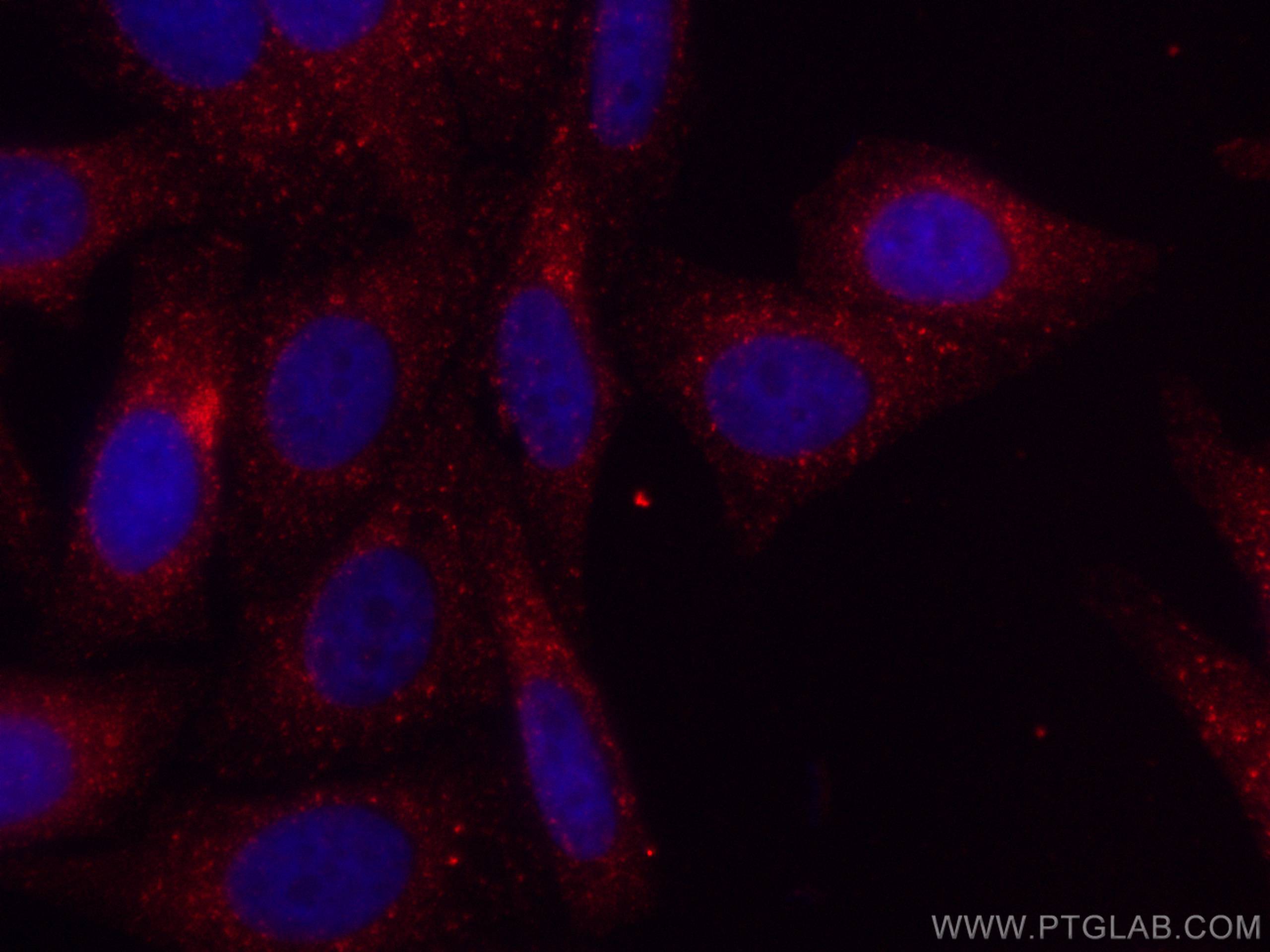Tested Applications
| Positive IF/ICC detected in | HepG2 cells |
Recommended dilution
| Application | Dilution |
|---|---|
| Immunofluorescence (IF)/ICC | IF/ICC : 1:50-1:500 |
| It is recommended that this reagent should be titrated in each testing system to obtain optimal results. | |
| Sample-dependent, Check data in validation data gallery. | |
Product Information
CL594-67016 targets COMMD1 in IF/ICC applications and shows reactivity with Human, Mouse, Rat, Pig samples.
| Tested Reactivity | Human, Mouse, Rat, Pig |
| Host / Isotype | Mouse / IgG1 |
| Class | Monoclonal |
| Type | Antibody |
| Immunogen |
CatNo: Ag28596 Product name: Recombinant human COMMD1 protein Source: e coli.-derived, PET28a Tag: 6*His Domain: 1-190 aa of BC022046 Sequence: MAAGELEGGKPLSGLLNALAQDTFHGYPGITEELLRSQLYPEVPPEEFRPFLAKMRGILKSIASADMDFNQLEAFLTAQTKKQGGITSDQAAVISKFWKSHKTKIRESLMNQSRWNSGLRGLSWRVDGKSQSRHSAQIHTPVAIIELELGKYGQESEFLCLEFDEVKVNQILKTLSEVEESISTLISQPN Predict reactive species |
| Full Name | copper metabolism (Murr1) domain containing 1 |
| Calculated Molecular Weight | 190 aa, 21 kDa |
| Observed Molecular Weight | 18 kDa |
| GenBank Accession Number | BC022046 |
| Gene Symbol | COMMD1 |
| Gene ID (NCBI) | 150684 |
| RRID | AB_2920071 |
| Conjugate | CoraLite®594 Fluorescent Dye |
| Excitation/Emission Maxima Wavelengths | 588 nm / 604 nm |
| Form | Liquid |
| Purification Method | Protein G purification |
| UNIPROT ID | Q8N668 |
| Storage Buffer | PBS with 50% glycerol, 0.05% Proclin300, 0.5% BSA, pH 7.3. |
| Storage Conditions | Store at -20°C. Avoid exposure to light. Stable for one year after shipment. Aliquoting is unnecessary for -20oC storage. |
Background Information
COMMD1(COMM domain-containing protein 1), also named MURR1, is implicated in copper homeostasis by binding one copper ion per monomer. COMMD1 was reported to accelerate the ubiquitination and degradation of NF-kappa-B subunits, its deficiency exerts enhanced NF-kappa-B mediated celluar response. Ubiquitinated by XIAP (X-linked inhibitor of apoptosis), COMMD1 undergoes proteasomal degradation. SOD1 activity can be downregulated by COMMD1.
Protocols
| Product Specific Protocols | |
|---|---|
| IF protocol for CL594 COMMD1 antibody CL594-67016 | Download protocol |
| Standard Protocols | |
|---|---|
| Click here to view our Standard Protocols |




